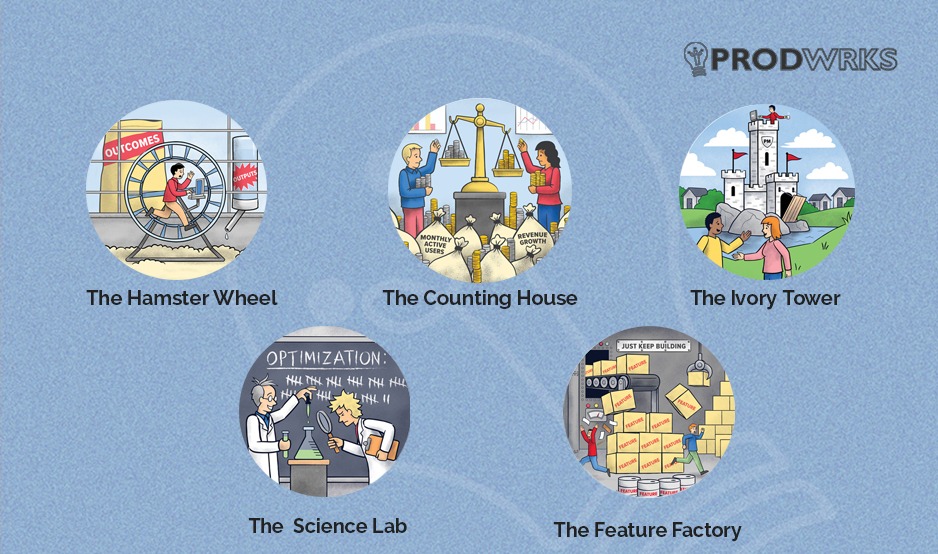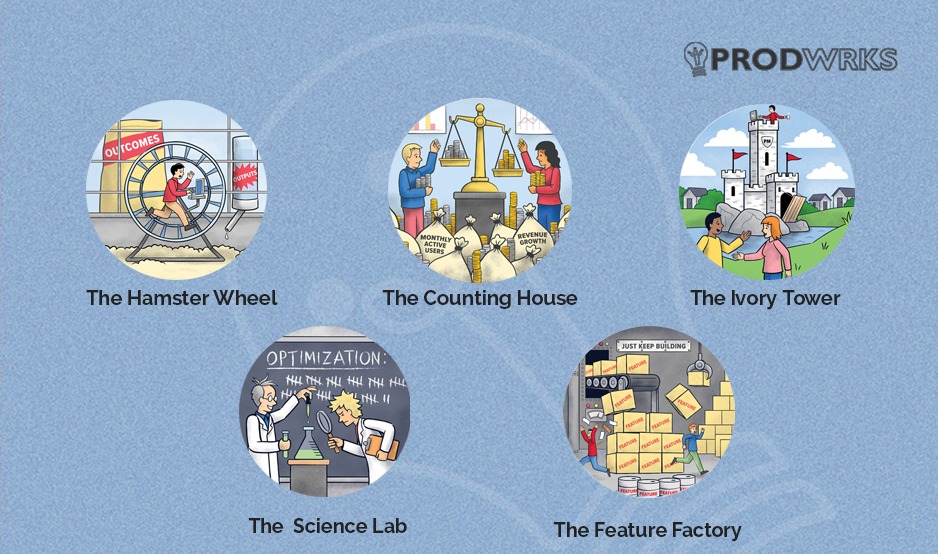
Leading a product is rewarding but also challenging, as it requires a mix of skills, knowledge, and creativity. However, product leaders often encounter various obstacles and pitfalls affecting their performance and product outcomes.
While it is hard to pinpoint what exactly could go wrong in product teams, it becomes easier if we have a guide. In this article, we give you insights from one such guide – Build What Matters, a book on vision-led product development written by Ben Foster and Rajesh Nerlikar. Ben and Rajesh have decades of experience leading product teams and have first-hand knowledge of why products fail.
They identify and explain the top 10 dysfunctions in product management that are often the root cause of product failure.

In this article, we will explore each dysfunction in detail, provide examples of how they manifest in real-life scenarios, and offer practical tips on how to avoid or fix them.
This article is a two-part series on the 10 dysfunctions of product management. Here, we will cover the first five dysfunctions, and in the next post (coming soon), we will cover the remaining five. Let’s dive in!
1. Hamster Wheel: When Output Trumps Outcomes
The Hamster Wheel is a product dysfunction where teams prioritize output over outcomes. They ship features on time but ignore their impact on customers or revenue.
Snapchat’s redesign in 2018 is a famous example of this. The redesign separated content from friends and publishers but annoyed and confused many users. They signed a petition to undo the update, and some celebrities like Kylie Jenner also disliked it. Snapchat’s stock price fell by 6%, and the app lost 3 million users in Q2 2018.
This shows the danger of the Hamster Wheel, which leads to wasted resources, low customer satisfaction, and poor market fit. To avoid this, product teams should adopt an outcome-driven approach, where they define and measure the value they deliver to customers.
2. Counting House: When Numbers Matter More Than Customers
The Counting House is where product leaders focus on internal numbers and ignore the customer.
A classic example of ‘Counting House’ is Sears, the once largest retailer in the US. Sears was obsessed with a metric called same-store sales, which measures the revenue of stores that were open for at least a year.
This metric did not capture the changing needs of customers, especially in the era of online shopping. Sears also failed to adapt to digital transformation and instead made short-term decisions like cutting costs and offering discounts. As a result, Sears lost its appeal and customers to rivals like Walmart and Target, which offered a better shopping experience. Sears went bankrupt in 2018 and learned the hard way that customer value is more important than numbers.
To avoid Counting House Dysfunction, product teams should ask themselves, “How can we deliver greater value to our customers?” and build their business model around it. This way, they can align their internal metrics with customer outcomes.
3. Ivory Tower: When You’re Blinded From Reality
The Ivory Tower is a product dysfunction where product teams are disconnected from their users and ship products or features without proper customer research. This leads to products that no one wants or needs.
Google Glass is a famous example of the ivory tower dysfunction. Google thought people would love to wear a camera on their face, but they didn’t. People found Google Glass creepy, invasive, distracting, and impractical. Google spent $1.75 billion on the project but sold only 10,000 units. Google Glass was a flop and was discontinued in 2014.
The lesson is that product teams should validate their assumptions with data and feedback. They should also collaborate with other stakeholders, such as sales, marketing, engineering, and customer support. This way, they can avoid the Ivory Tower Dysfunction and build products that matter and deliver value.
4. Science Lab: When Data Drowns Out Creativity
The Science Lab is a product dysfunction where product teams focus on experimenting with minor improvements to the product that are measurable but not meaningful. This can lead to analysis paralysis and missing the bigger goals.
Google’s 41 Shades of Blue experiment in 2009 is a famous example of a science lab. Google ran a huge A/B test to show 41 different shades of blue to millions of users and measure which one got more clicks. Google claimed that adding a slightly purple shade of blue increased their revenue by $200 million.
But this was less than 1% of their total revenue in 2009. This experiment had negative consequences: it wasted time and resources, it frustrated Google’s designers and engineers, who felt their creativity was replaced by data, and it ignored the human element of product design, which is understanding the users’ needs, emotions, and preferences.
The lesson is that product teams should use data to inform their decisions, not dictate them. They should empathize with customers to build products that solve their problems and delight them.
5. Feature Factory: When More Is Less
The Feature Factory is a product dysfunction where product teams add new features and follow competitors, even if they don’t meet the needs of their customers. This can lead to products that are bloated, complex, and irrelevant.
Nokia, the former king of mobile phones, faced competition from iPhone and Android in the late 2000s. Nokia’s culture valued engineering and hardware and decided to ship new models with more and more features. But they were wrong.
Nokia’s N-series and E-series smartphones had features like TV out function, FM radio transmitter, and slide-out keyboards. However, these features were overkill for most users. They made the phones bulky, hard to use, and glitchy. Nokia failed to innovate in areas that mattered to users, such as app ecosystems, touchscreen interfaces, and internet connectivity. But the iPhone and Android beat Nokia by providing these superior user experiences.
They also identified and explained the top 10 dysfunctions of product management. To avoid Feature Factory Dysfunction, you should define and align your product vision and strategy with the customer needs and the business goals. Focus on building features that add value and solve problems, not just create noise and complexity.
This covers the first five dysfunctions of product management. Don’t miss the next post, where we’ll reveal the remaining five dysfunctions and how to avoid them! Follow us on instagram and turn on notifications to receive further updates about the part-2.




